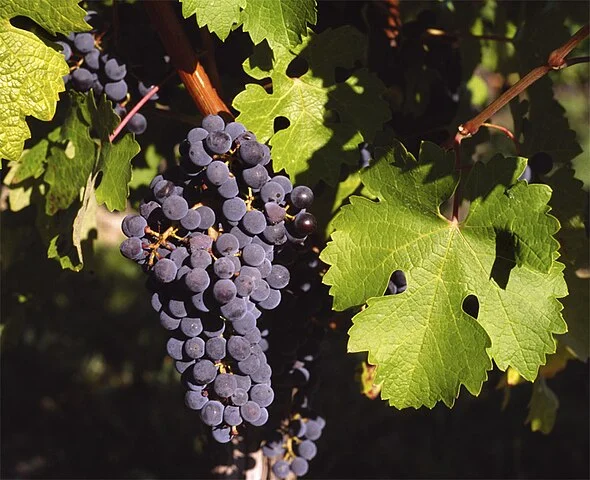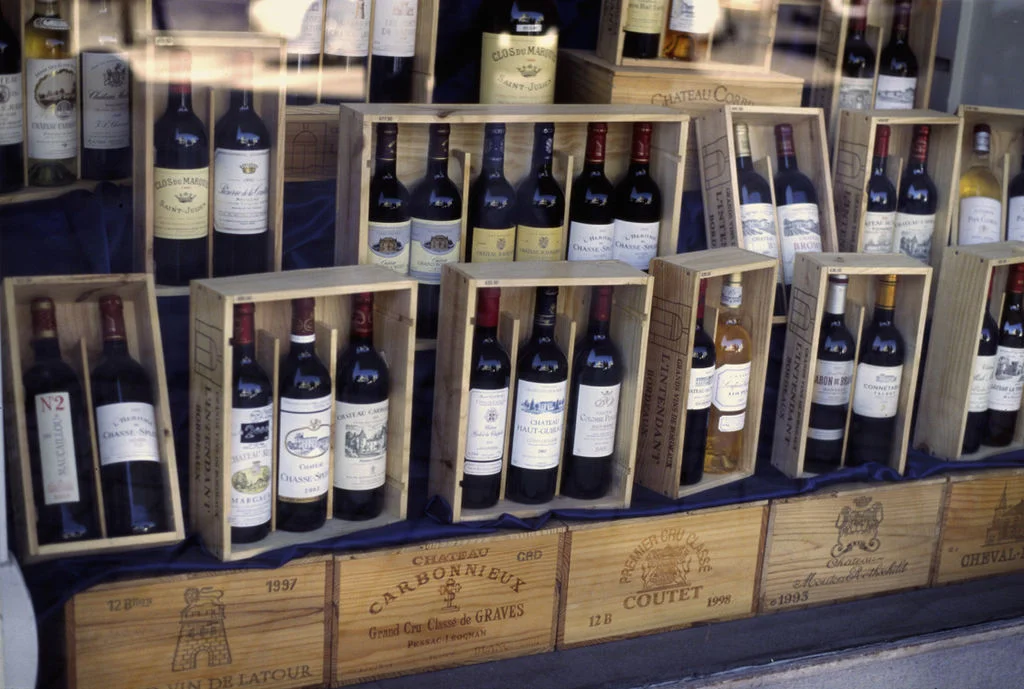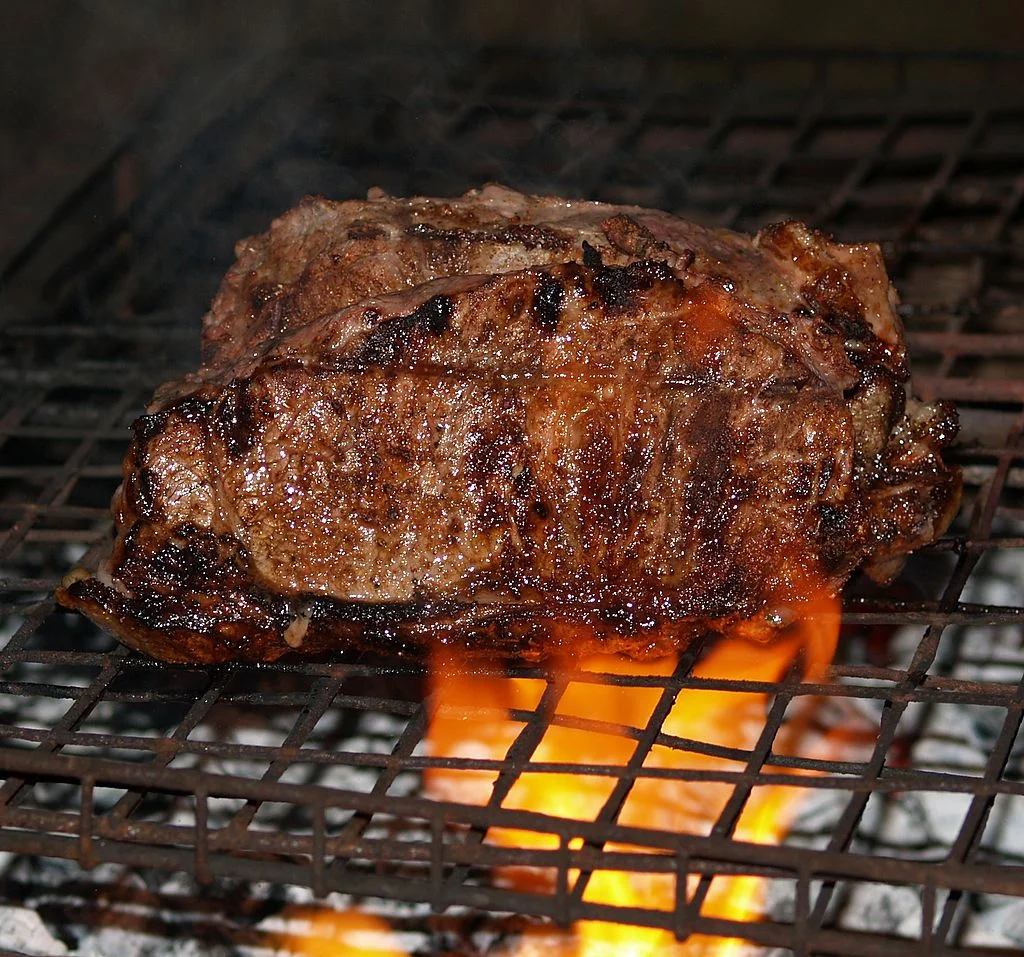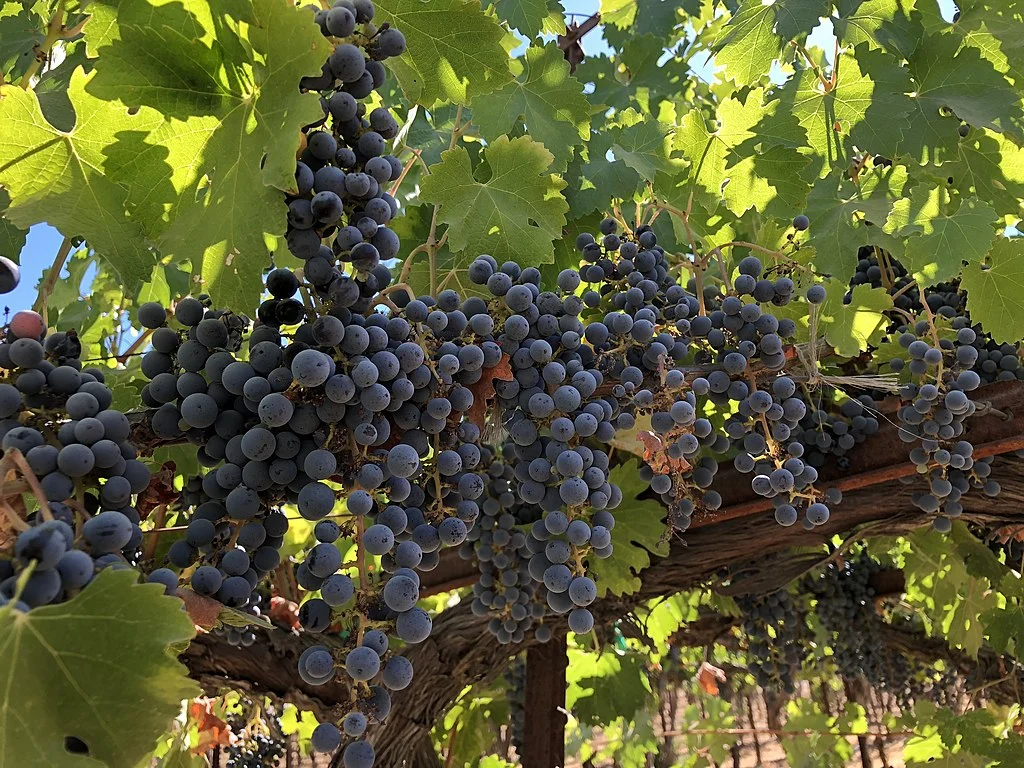After my posts about Grüner Veltliner and Riesling, it’s time to dive into some reds, and the silverback of all wines, Cabernet Sauvignon! To be honest, it’s not the best wine to introduce wine newbies to, because it has some pretty intense flavours and tannins (tannin makes your mouth feel dry), and it’s often pretty high in alcohol too. It’s definitely not the type of wine that you should be sipping on for hours on a warm summer afternoon with your mates. Not unless you wanted the conversation to rapidly veer into the inappropriate, and you’re OK with eventually stumbling away with purple stained teeth and a banging headache at 5pm. Cabernet Sauvignon wine (or Cab Sav for short) needs a dance partner, and more specifically, some food to bring out its best because it’s such a big, earthy and powerful wine. Anyway, let’s get started on this beast of a grape, here’s my guide on the best Cabernet Sauvignon for beginners…
Cabernet Sauvignon's Tinder profile
Hi, I'm Cabernet Sauvignon, but I go by Cab. Admittedly, I'm a strong character with a dry sense of humour, so I need you to match my energy otherwise this just isn't gonna work. I can't bare small talk and like to get straight to the point. My french roots run deep, and I have a holiday home in California so I have a lot to offer the right partner. It's probably not ok to say this nowadays, but, I'm a proud meat eater - so just give me a steak and I'll take you home with me. Told you I'm bold 😉 I have unashamedly high standards, and I'm particularly interested in meeting a well-bred Merlot from a similar lineage, assuming they're not all taken already...

Cabernet Sauvignon For Beginners
Introduction
Cabernet Sauvignon is what most wine newbies think of when they imagine drinking red, as it has clear black fruit flavours and a noticeably dry mouthfeel. Originating from the Bordeaux region in France, this grape has spread its roots worldwide, gaining recognition for its distinctive characteristics. Let’s delve into a few questions about Cab Sav, so that you can comfortably order one and have a much clearer idea of what it is you’ll be getting…
Where does Cabernet Sauvignon come from and where does it grow?
The Cabernet Sauvignon grape is a result of a natural cross between Cabernet Franc and Sauvignon Blanc grapes. Bordeaux, particularly the Left Bank (south of the Gironde Estuary & the vineyards arounds the Garonne river), is still considered one of the primary regions associated with Cabernet Sauvignon, and it is here where CS is often blended with other grape varieties such as Merlot, Cabernet Franc, Malbec, and Petit Verdot to create the famous Bordeaux blends.
While Cabernet Sauvignon’s origins are French, it has successfully adapted to plenty of other wine regions around the world, so also keep an eye out for bottles from:
- Napa Valley, California, USA: Napa Valley is renowned for its high-quality Cabs. The warm climate and diverse soils contribute to the development of world class Cabernet Sauvignon.
- Coonawarra, Australia: Aussie, Aussie, Aussie! Known for its “terra rossa” soil, Coonawarra in South Australia is celebrated for producing Cabernet Sauvignon which often has minty and eucalyptus notes, believe it or not. The koalas will certainly be happy next time they head to the pub then…
- Maipo Valley, Chile: yep, Cabernet Sauvignon thrives in the Maipo Valley too.
- Tuscany, Italy: while not as widely planted as in Bordeaux or California, Cab Sav is also grown in Tuscany, often as part of a “Super Tuscan” blend, where it’s blended with native Italian grape varieties.
How do Cabernet Sauvignon grapes affect the final wines?
Like all wines, most of the final Cabernet Sauvignon wine you drink is defined by the grape itself, so let’s look at the Cab Sav grape:
1. Cabernet Sauvignon grapes have thick, durable skins. These thick skins impart several characteristics to the wine, including deep color and robust tannins (colour and tannin are found mostly in the skins).
2. The berries of Cabernet Sauvignon are relatively small. This, combined with the thick skin contributes to a high ratio of skin to pulp, enhancing the concentration of flavors and tannins in the resulting wine. Flavours and smells in wine come mostly from the skins, not the pulp or juice itself. This is a big reason why Cab Sav is such a punchy wine – KABOOM!
3. Cab Sav grapes need a long time on the vine in sunshine to get ripe and to develop flavour before being harvested. Of course, this makes it well-suited for regions with a warm and long growing season (e.g. Napa Valley in California)
Cabernet Sauvignon characteristics
1. High tannins: of all the Cabernet Sauvignon characteristics, the one that most would associate with this wine is its high tannin content. Tannins are compounds found in grape skins, seeds, and stems that contribute structure and a bitter quality to the wine, and it makes your mouth feel as if it has been dried out – imagine sucking on a used tea bag and how that would feel inside your mouth – that is the same sensation that tannin provides. The tannins in Cabernet Sauvignon are often described as firm and grippy, which sounds rather silly, I know, but it’s actually quite accurate once you’ve had a few swigs.
2. Moderate acidity: Cabernet Sauvignon typically has above average acidity, providing a lively and refreshing quality to the wine. This acidity helps it pair well with a variety of foods, especically fatty meats as it helps to ‘cut through’ all that grease.
3. Good aging potential: another key characteristic of Cabernet Sauvignon is its legendary aging potential. The wine’s high tannin content and acidity mean it can evolve gracefully over time. The aging process can bring out tertiary flavours like leather, cigar box, and truffle, adding layers of complexity. Well-made wines can often improve with several years of bottle aging too, so just by leaving them in the bottle under the right conditions means they will keep getting better.

Why do I often see Cabernet Sauvignon blended with other wines?
- In Bordeaux, Cab Sav is regularly blended with Merlot, Cabernet Franc, Malbec, and Petit Verdot – winemakers do this not only to help balance out imperfections from their harvest, but for a variety of other reasons including:
- Calming down the intense tannin: as already mentioned, Cabernet Sauvignon is known for its high tannin content, which can contribute to a firm and structured mouthfeel. Blending it with other grape varieties that have softer tannins, such as Merlot or Malbec, helps create a more approachable and well-balanced wine.
- Developing better, more complex wines: Cabernet Sauvignon wine brings a distinctive, yet rather predictable flavor profile, often characterized by dominant black currant, blackberry, plum, and sometimes herbal or cedar notes. Blending with other varieties adds complexity and nuance to the flavor profile, creating a more layered and interesting wine. This brings wine makers plaudits whenever they nail this process, and who doesn’t love a bit of credit!
- Reducing cost: Cabernet Sauvignon grapes can also be expensive, so blending with other varietals can help control costs while maintaining a high-quality product. This is particularly relevant at the cheaper end of the market.
Cab Sav Taste
Cabernet Sauvignon wines are known for black currant, plum, cherry, and sometimes hints of green bell pepper, cedar, or tobacco. As always, the flavor profile varies depending on factors such as climate, soil, and wine-making techniques. For the wine newbie, the Cab Sav taste will be pretty intense, and may have an overly drying effect in the mouth. Again, this is due to the high tannins, which are more evident in younger Cabs – tannin softens over time. Most are better aged but these can then get pretty expensive too. As such, Cabernet Sauvignon isn’t the best red wine for beginners as it may seem a little harsh and bitter to the uninitiated. A more affordable blended cab is probably a good way for complete wine newbs to get into this variety.
Cabernet Sauvignon food pairings
When pairing food with Cabernet Sauvignon think big bold flavour, because tannins & acidity are hungry! Cabernet Sauvignon is also a carnivore’s dream pairing. If lions could drink, they’d be all about Cab Sav. So dust off the old Weber in your garage and get grilling cos the smoky, charred flavors of barbecued items work really well with the boldness of Cabernet Sauvignon! In general, Cabernet Sauvignon pairs well with hearty dishes like grilled steaks, lamb chops, stews or dishes with rich tomato-based sauces. Aged cheeses, especially those with a bit of funk, can also complement the wine’s robustness and big flavours.

Here are some classic Cabernet Sauvignon food pairings to enhance your glass…
Meats: grilled or roasted red meats and game: the robust tannins in Cabernet Sauvignon complement the richness of grilled or roasted red meats & game, such as steak, lamb, beef, duck, wild boar, or venison. Also, the wine’s fruitiness can balance the savory flavors of the meat. Tip: consider a grilled ribeye or a rosemary-infused lamb roast.
Cheeses: aged Cheeses here because Cabernet Sauvignon pairs especially well with strong flavors, due to the wine’s tannins & acidity cutting right through the richness of the cheese. Tip: try it with an extra mature cheddar or Parmesan.
Sauces: use Cabernet Sauvignon in dishes like beef stew or just as a pan sauce and deglazer with your next steak. The wine enhances the depth of flavor in the dish. Tip: a Cabernet Sauvignon reduction can elevate the taste of a pan-seared steak.
Chocolate: dark chocolate in particular. The tannins in Cabernet Sauvignon do complement the bitterness of dark chocolate, creating an interesting pairing. Tip: enjoy a glass with a piece of high-cocoa dark chocolate. We say a ‘piece’ here, but of course feel free to demolish the entire bar (and bottle).
Veggie options: the earthy flavors of mushrooms suit the black fruit of the forest characteristics of Cabernet Sauvignon. Tip: pair it with grilled/barbecued veggies, particularly portobello mushrooms, or a mushroom/ truffle based dish.
Herb-Infused Dishes: Cabernet Sauvignon often has herbal notes that can complement food with herbs like rosemary, thyme, or sage. Tip: a herb-infused roast chicken.
Where to buy the best Cabernet Sauvignon for beginners?
Where to buy Cabernet Sauvignon in the US?
The Organic Wine Exchange have a great selection of Cabernet Sauvignon wine from most of the main regions, including Bordeaux, California, and Tuscany, with a particular focus on vegan and biodynamic wines from small-scale producers.
Where to buy Cabernet Sauvignon in the UK?
In the UK the Great Wine Company have a good collection of Cabernet Sauvignon wines to buy, ranging from the main Cab regions like Australia, South Africa, the USA, and France, to lesser known countries like Lebanon where it is blended with other varieties to produce more approachable blends of Cabernet Sauvignon for beginners.
Equally, Laithwaites UK have some of the best Cabernet Sauvignon for beginners with a great selection of Cabs from France, Australia, Chile, South Africa, and even Moldova! Check out their full range here.
Where to buy Cabernet Sauvignon in Ireland?
Cabernet Sauvignon beginners in Ireland can check out 8 Wines to get their red wine fix, with a wide selection of highly rated bottles from all the best regions.
Where to buy Cabernet Sauvignon in Australia?
Being one of the best producing Cabernet Sauvignon wine producing regions in all the world makes Australia a great place to pick up some real high quality examples at great value prices. Check out Laithwaites Australia for a wonderful selection of Aussie Cabs (over 40 to choose from!).
A beginner's guide to Cabernet Sauvignon: Outro
Hopefully this beginners guide to Cabernet Sauvignon has given you a much better idea of what it’s all about. If you’re looking for the best Cabernet Sauvignon for beginners to start your journey, then do check out the links above depending on where you live, because all of these online wine merchants offers some easier drinking cabs too. If you have any questions, comments or even a request for which wine we should feature in our next review, then please write a comment below and also subscribe to our mailing list to stay informed about our upcoming posts. Now go fire up the barbie and slurp away!





The post was very good, I appreciate how you explain it, Keep the posts coming! Very good talent.”
Thanks very much, Akhil, that’s very kind of you to say! Let me know if you have any requests for the next wine guide!